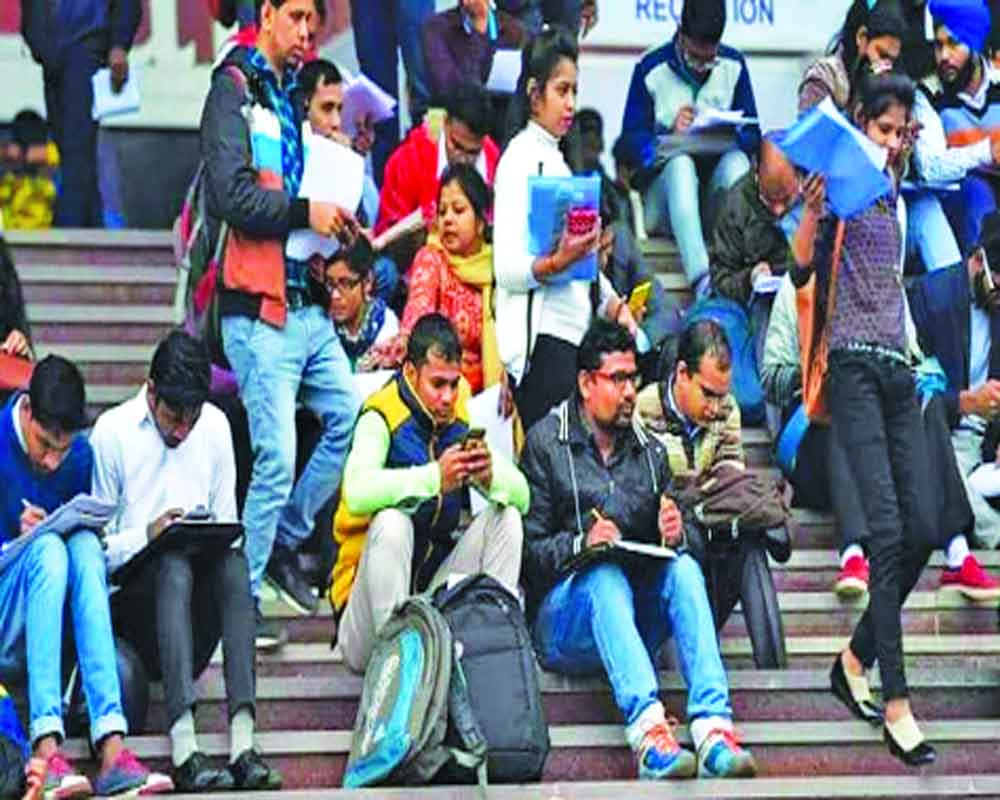The higher eduction in India does not bother about employability of the students thereby adding to the fleet of educated unemployed
India has the demographic dividend of having 65% of its youth in the working age group. The number of pass-out graduates is also satisfactory. But the crucial issue is their employability. Businesses and industries are disappointed with the graduates lacking the right kind of employability skills. The difficulty in filling up jobs, therefore, is 58% in Bharat, which is much above the global standard of 38% (as in 2015). As per India Skills Report-2021 (Chamber of Indian Industry, CII), only 42.72% of Arts graduates, 40.30% of Commerce graduates, and 30.34% of Science graduates of the country are employable. Split into gender, 41.25% of women were con-considered employable against 38.91% male.
Employability surveys find in graduates, apart from a lack of technical skills, poor communication and language skills. Business and industry prefer operational expertise to sheer scientific and academic knowledge. The makers of National education policy 2020 are aware of this ground reality. The primary reason for the low employability of students in mainstream courses is the poor quality of instruction received in the HEIs. As per AISHE (2019-20) report, 79.41% of students pursuing mainstream graduate courses were enrolled in private affiliated colleges, which hardly follow the quality parameters of teaching and learning.
Such HEIs are not properly regulated by the affiliating universities and respective state governments. If the employability of graduates is to be improved, ensuring quality teaching in these institutions is the first prerequisite. Enrolment in primary and middle schools witnessed a tremendous increase with Sarva Shiksha Abhiyan (2001) preceded by District Primary Education Programme (1994) and in secondary classes under the impact of Rashtriya Madhyamik Shiksha Abhiyan (2009). Conscious efforts to raise the enrolment of girls through incentives and facilities also yielded positive results. All these led to a massive upsurge in admission to higher education. The major initiative for higher education came as late as 2013 with Rashtriya Uchchatar Shiksha Abhiyan (RUSA). State governments and universities that grant affiliation, need to regulate the private HEIs if we have to produce quality graduates. Job-oriented courses are the panacea for the malaise of unemployability. However, the generic mindset of our society is to go for an academic bachelor’s degree because vocational courses are held in low esteem.
A pragmatic approach, in this backdrop, will be to integrate vocational education with general education in colleges. NEP also wishes to overcome the social status hierarchy associated with vocational education by gradually integrating it into mainstream education. The first step should be strengthening the vocational courses running in government or university colleges. These courses need to be made skill-specific by re-orienting the curricula to National Occupational Standards (NOS) and relevant Qualification Packs (QP) formulated by respective Sector Skill Councils (SSC). Since these courses are run under a self-financing scheme, only guest teachers of poor quality are hired for low wages. MSDE, which regulates vocational training, and ME, which regulates vocational education, need to act in perfect coordination in this respect. Vocational courses should be accredited by the National Board of Accreditation (NBA). Some region-specific courses should be introduced after studying data on demand and supply provided by Labour Market Information System (LMIS).
Every college of the university should open Community College on its campus to run B Voc Courses that aim at skilling, re-skilling, and up-skilling. In 2018-19, total enrolment in B Voc was only 33,263. This course needs to be popularised to improve the employability of youth. Community colleges should be properly linked up with the governing authorities of the government. The courses to be chosen must be relevant to the job market.
The course composition for B Voc combines skill components and general education credits in a ratio of 3:2. The B Voc program has multiple entry and exit options, like what NEP proposes for mainstream graduate courses. Anyone having passed higher secondary in the conventional or vocational stream may get admission. The course structure of B Voc is also similar to vocational courses in the mainstream. The German, Austrian and Swiss models that allow healthy convergence of vocational and conventional streams with flexible framework inside should also be considered. Nearly 79% of youth in the 18-23 age group, who are not enrolled in higher education, can be attracted to it if the employability of graduate courses is improved. The higher education system of Bharat is a sleeping giant which needs to be made a proactive, dynamic, and responsive sector capable of churning out good quality human resources by galvanizing it into action on the measures proposed hereinabove.
(The writer is a member, Bihar State University Service Commission. The views expressed are personal)


























